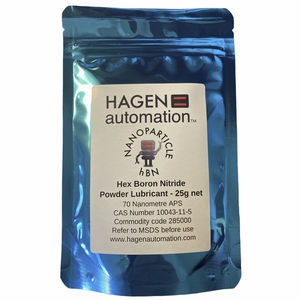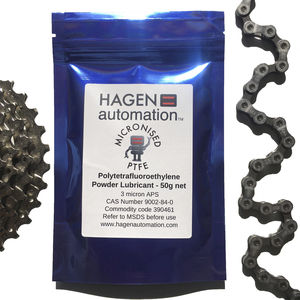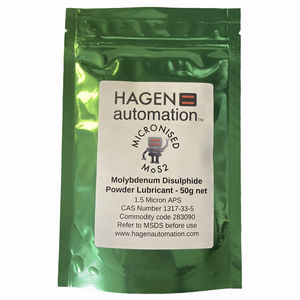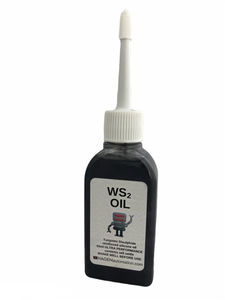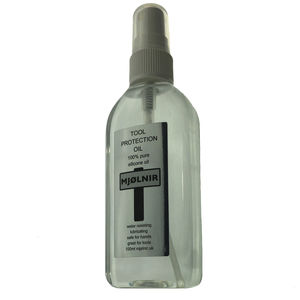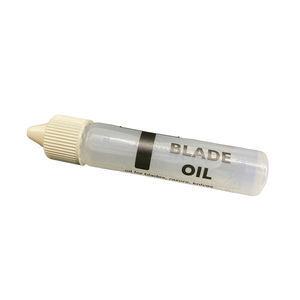
- Materials - Tools - Components
- Lubrication
- Molybdenum disulfide lubricant
- Hagen Automation Ltd
Molybdenum disulfide solid lubricant for engineshigh-temperaturehigh-performance
Add to favorites
Compare this product
Characteristics
- Composition
- molybdenum disulfide
- Product applications
- for engines
- Other characteristics
- high-temperature, high-performance, high-pressure
- Operating temperature
400 °C
(752 °F)
Description
• High performance dry lubricant - long lasting high pressure high temperature resistance
• Add to oils and greases at between 2% and 15% by weight to add durability and stability
• Great for engine rebuilds and other demanding applications - very stable chemistry
• High Temperature Performance - Stable up to +400C
• High Pressure Performance - Stable up to 250,000 PSI
Molybdenum Disulphide is the active component in many advanced oils and greases often referred to as Moly. MoS2 has a hexagonal crystalline structure similar to graphite, WS2 and hBN lubricants. One of the most studied of this type of lamellar compound it has high thermal, mechanical and chemical stability. Having excellent lubrication in moisture free environments up to 400 degrees C and pressures up to 250,000 psi. MoS2 has superlubricity at high pressures making it even slippier under pressure. Environmentally stable and practically inert. Our high purity, super refined micronised Moly powder has an average particle size of just 1.5 micron allowing it to pass through oil filters and get into microscopic surface imperfections. Use directly or as an additive with greases.
Catalogs
No catalogs are available for this product.
See all of Hagen Automation Ltd‘s catalogsRelated Searches
- Synthetic lubricant
- Synthetic oil
- Anti-corrosion lubricant
- Bearing lubricant
- High-performance lubricant
- High-temperature lubricant
- Bearing grease
- High-performance oil
- Anti-corrosion oil
- High-temperature oil
- High load capacity lubricant
- Chain lubricant
- Synthetic grease
- Lithium grease
- Engine oil
- Anti-corrosion grease
- High-viscosity lubricant
- Extreme pressure grease
- High-viscosity oil
- Automobile grease
*Prices are pre-tax. They exclude delivery charges and customs duties and do not include additional charges for installation or activation options. Prices are indicative only and may vary by country, with changes to the cost of raw materials and exchange rates.



